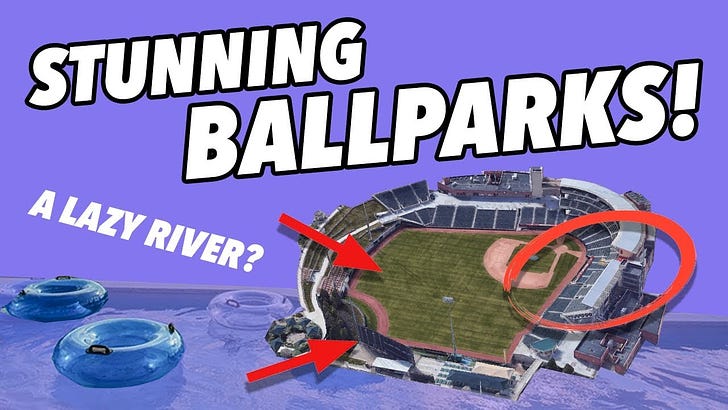The minor leagues are being killed. I don’t think anyone is arguing that they were dying, given the pre-pandemic economics of the clubs. Teams don’t make you rich, but holding them and selling down the line, especially in major markets, is still lucrative.
In 2016, Triple-A clubs were valued between 20 and 60 million dollars. Those values haven’t gone down and many think Indianapolis, which has been family owned for fifty years, is perhaps the club with the most value to unlock in the unlikely event of a sale.
Even going down to A-ball is lucrative, with the recent sale of the Ft Myers club reaching into the low eight figures, which does not include the facilities, as those are maintained by the major league club through it’s agreement with the city. Yes, that is one convoluted sentence. (Ft Myers will no longer be the Miracle when they do play. Instead, they will be the Mighty Mussels, which increases the goofy name count in the minors by yet another one.)
There are regularly clubs for sale, but with MLB ownership increasingly getting involved (and few of those teams on the chopping block), it’s believed that some teams would rather control their teams and keep travel to a minimum. The extreme would be “complex leagues”, where everyone at low levels (perhaps everything up to Double-A) would be at the team complexes, playing only against Cactus or Grapefruit teams. In many situations, shared facilities would be even more crowded, but it works in the spring.
One other idea that has some traction is the “co-op” team. As with facilities, teams would share minor league teams, with both or even all feeding in. This has worked to some extent in the Arizona Fall League, but getting it staffed required MLB to push teams for quotas, especially on pitchers.
This would result in teams having more talent, but it would reduce the teams by at least half. That would make travel even more of an issue unless you cut leagues instead of individual teams. You couldn’t take Pensacola and Montgomery and expect them to travel to Amarillo or New Hampshire without increasing costs. You can look at this map and make an argument that you could concentrate the teams in the southeast, but some of the most valuable clubs are outside that cluster. The problem is worse for Triple-A, which goes sea to shining sea.
Absent a vast remix of the teams in some geographic manner, there’s not a great solution to the problem. One possible solution is a league distribution model, where the players are distributed across teams by some system rather than having a team to team ladder. That creates more problems than it solves, absent MLB coming in an establishing a system itself.
I’d argue one modification would make the system a bit more palatable. It almost exists now in baseball and it’s a system widely used in soccer. It’s loans and it would be extremely easy to create in baseball. Wipe out the vagaries of the Rule 5 draft and merely make any player available to be loaned under similar rules.
As an example let’s say the Angels decide that Jo Adell isn’t going to make their team just yet. At the same time, Cincinnati could really use an outfielder as they push to contend in the NL Central. The Reds could borrow Adell for a full year. He would not be eligible to be optioned, but would remain the property of the Angels, who would get him back next year. The Reds would pay all of Adell’s salary, plus some fee to the Angels.
Players with more than two years of service time wouldn’t be able to be loaned, so this would “unblock” players more effectively than the Rule 5 does, plus it would give some players an immediate kick to service time. (Yes, there’s a value to that lost gamed service time for the holding team, but I don’t think they’ll want to acknowledge it even in light of the recent Kris Bryant grievance win.)
The Players union has long been loathe to negotiate for anything that values younger or pre-MLB players, giving away draft and minor league value for even the smallest gains at the top. It’s allowed them to keep a salary cap away, but they already gain a lesser share of revenue than the major sports that have it! A loan provision wouldn’t be in their normal style, but could be a way of making some gain while removing an impediment they’ve acknowledged.
What the loan provision wouldn’t do is help upper level minor league clubs where these players are often held longer than they should. Even if you argue that Jo Adell doesn’t sell tickets in Salt Lake, it’s hard to argue that taking talent out of the upper levels doesn’t hurt those clubs in some way. At Triple-A, the best prospects often give way to insurance policies and Quad-A tweeners already, so it’s a harder argument to make.
Simply put, there is no good solution to this. Soccer-style Academies don’t seem to work in America. If the minor league system is economically broken, so be it. It will be a loss to the game overall if we lose some iconic clubs and small town temples where people can fall in love with the game or just get close to it on a reasonable ticket price. The Lords of Baseball may be many things, but they’re seldom anything but myopic.




